| The crew patch for Apollo 19 shows the hand of Adam, from Michelangelo's Sistine Chapel painting, bringing life to the moon. This represents man's exploration of this heavenly body. Apollo is represented by the sun illuminating the universe. Haise acknowledges his fellow Apollo 13 crew members, whose own mission to the moon was abandoned in 1970, by adding two stars heading for the moon. |
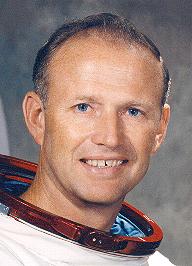 |
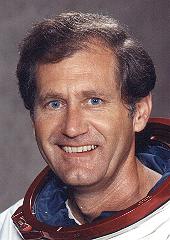 |
| Houston: 19 you are go for P64. Haise: Roger Houston, 10 seconds to go. Carr: And the camera is running. Houston: Rog, copy the camera is running. Haise: OK Houston stand by........OK pitchover. Carr: Confirm that Houston P64 and we have pitchover. Houston: Rog copy that, go at pitchover. Haise: And Houston there is is.. just like the sims. Carr: Man there it is Houston... Copernicus right in front of us. Haise: Look at those central peaks Gerry...amazing. Houston: OK 19 you are go for landing, you are go for Copernicus Base. Haise: No doubt about it, we're headed right for those peaks over there. Carr: 3000 feet Fred, 75 feet per second. Haise: Gerry just look at that far rim. I have never seen anything so impressive in my life Houston as Copernicus at 3000 feet. Houston: Roger Fred, 3000 feet, 75 feet per second descent rate, looks good from here as well. Carr: Can't wait to see it from about 12 feet, lets land this baby. Haise: I tell you Houston this was worth the wait. |
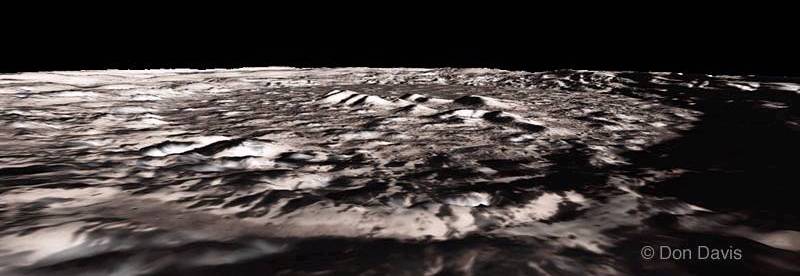 |
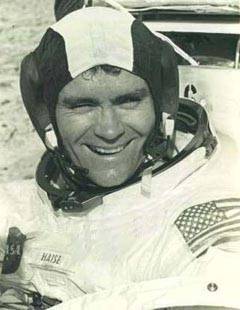 |
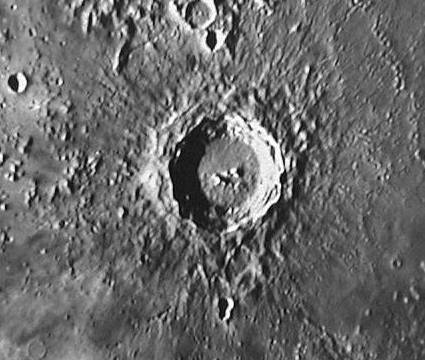 |
| Apollo 19 Descent to Copernicus Base |
| William Pogue Command Module Pilot |
| Gerry Carr Lunar Module Pilot |
| Fred Haise Mission Commander |
| This is how the 55 mile wide crater Copernicus could have appeared to the two men in the Lunar Module as they passed over its 2.5 mile high rim and headed for a landing amongst its 2625 feet high central peaks. |
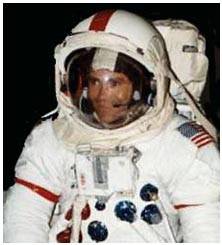 |
| After landing and suiting up, Fred Haise and Gerry Carr would have made three trips out onto the surface of the moon to drive the LRV, lay out an experiment package and gather rock samples from the surrounding terrain. |
| How Haise would have looked upon setting foot upon the moon to view the magnificent view of high mountain peaks and the incredible site of the encircling rim towering high into the black lunar sky. |
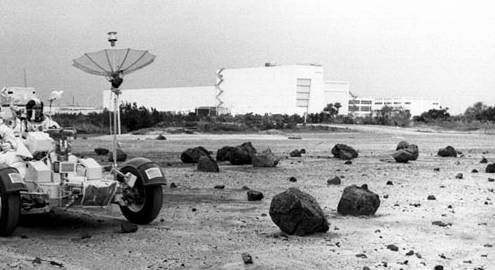 |
| Fred Haise driving the Lunar Roving Vehicle in 1971 during training as the backup commander for Apollo 16. |
| Apollo 19 was cancelled on the 2nd of September 1970, as well as the money drying up for grand post Apollo missions, the NASA management didn't have the resolve to fight the politicians crying out for the moon landings to be stopped. As George Mueller stated, "The more times you fly out there the more probabilty there is you won't come back," compare this atitude to the one back in 1968 when the decision was made to let Apollo 8 go to the moon on the first manned launch of the Saturn V moon rocket, to a target a quarter of a million miles away, in a spacecraft that had only flown once before with men aboard. So Apollo was killed off and the rocket stages for Apollo 19 were put on display at the Johnson and Kennedy Space Centres, relics to an age when man touched the face of the moon. |
| Back to Index |
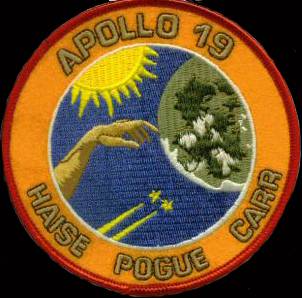 |
| Haise Pogue Carr |
| Don Davis Space Artist and Animator |
| Copyright 2001-2009 by Robert M. Southall |